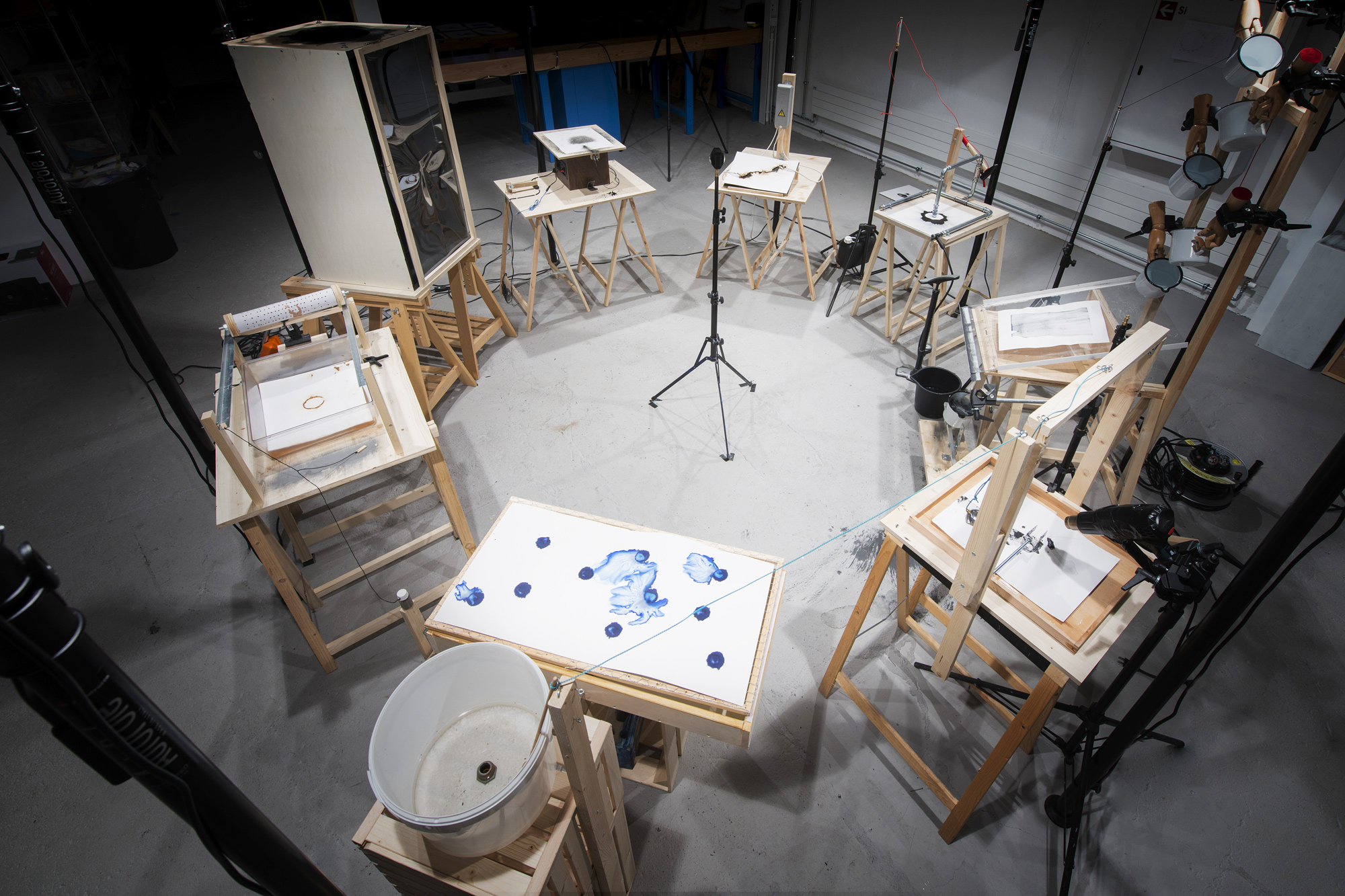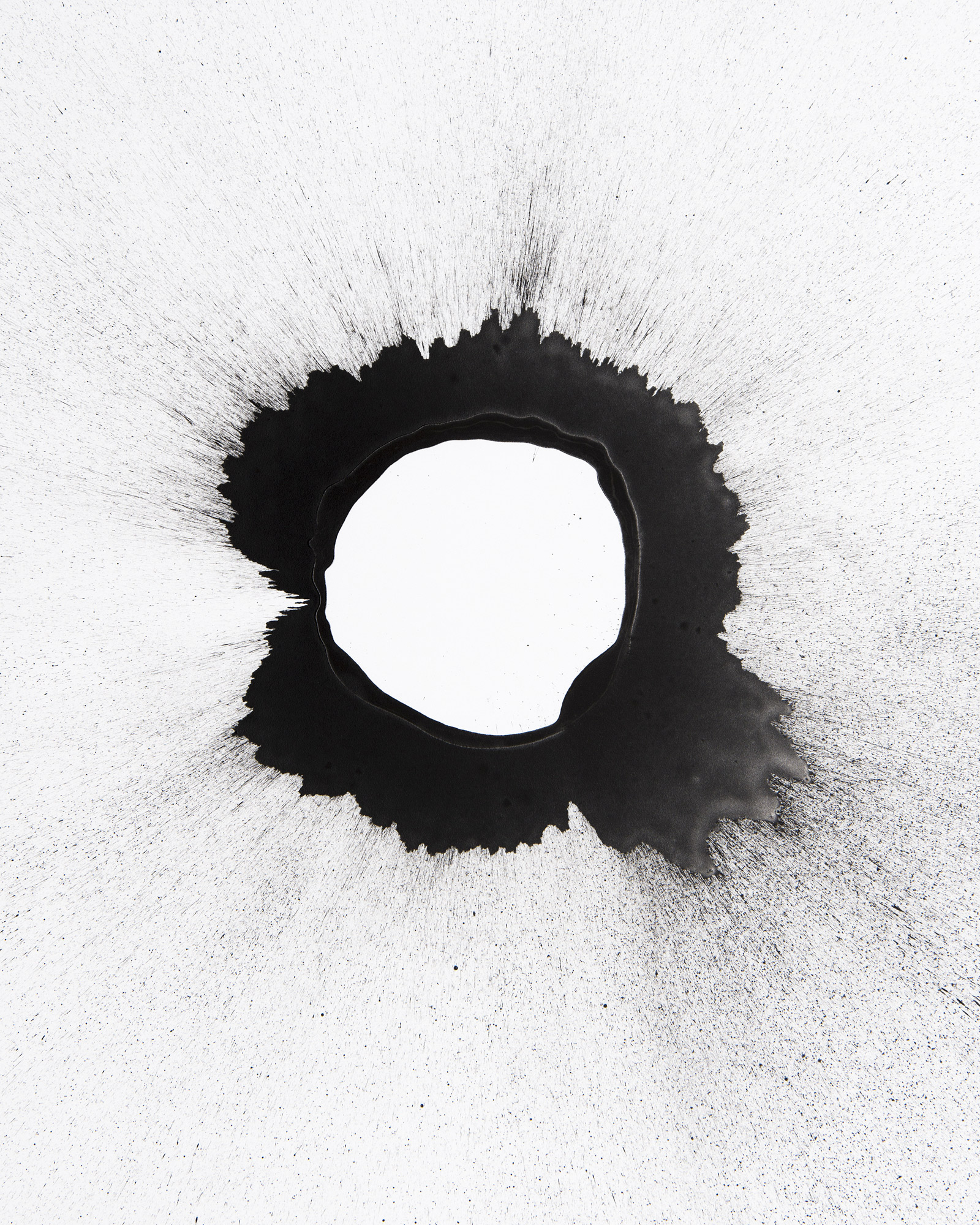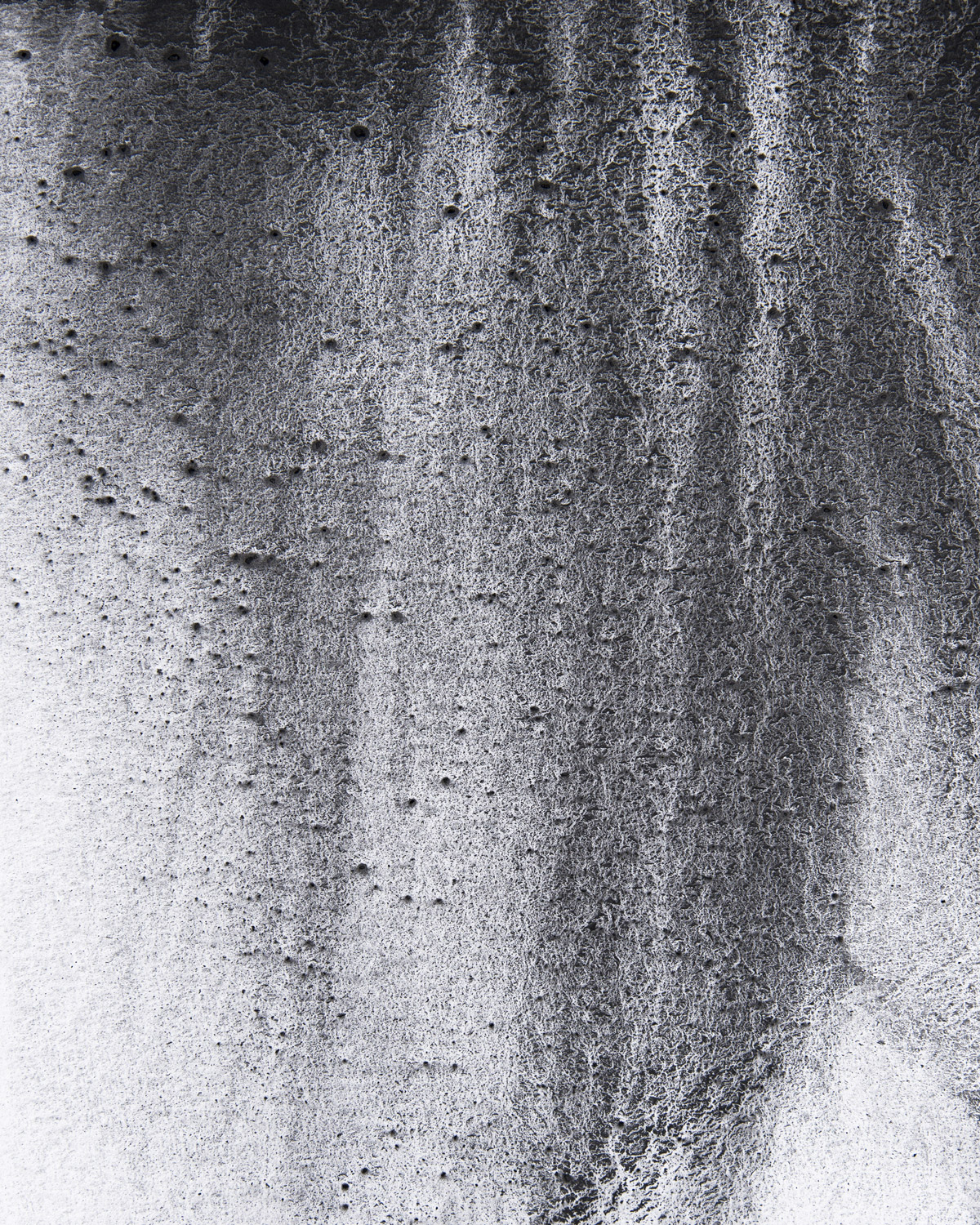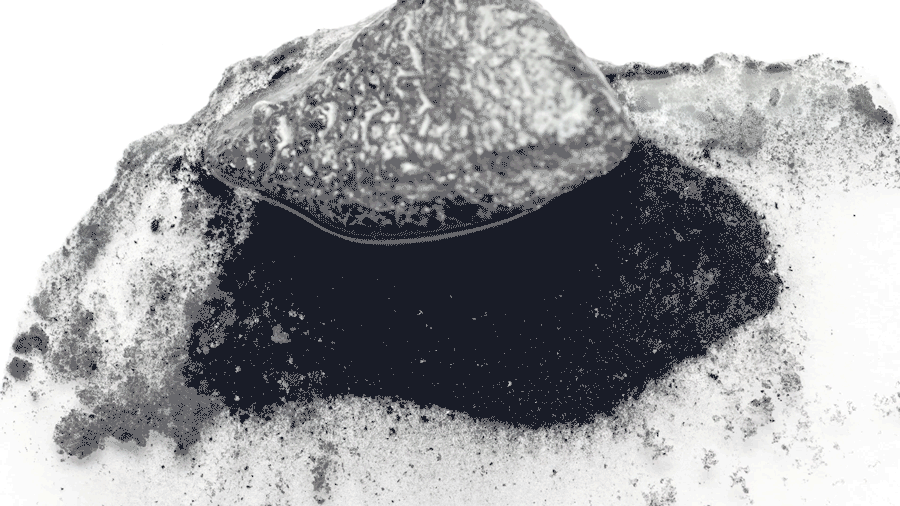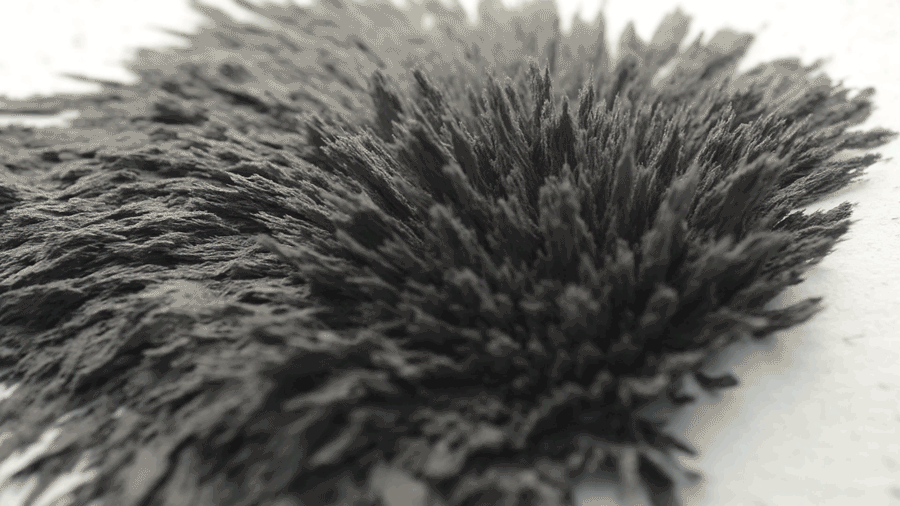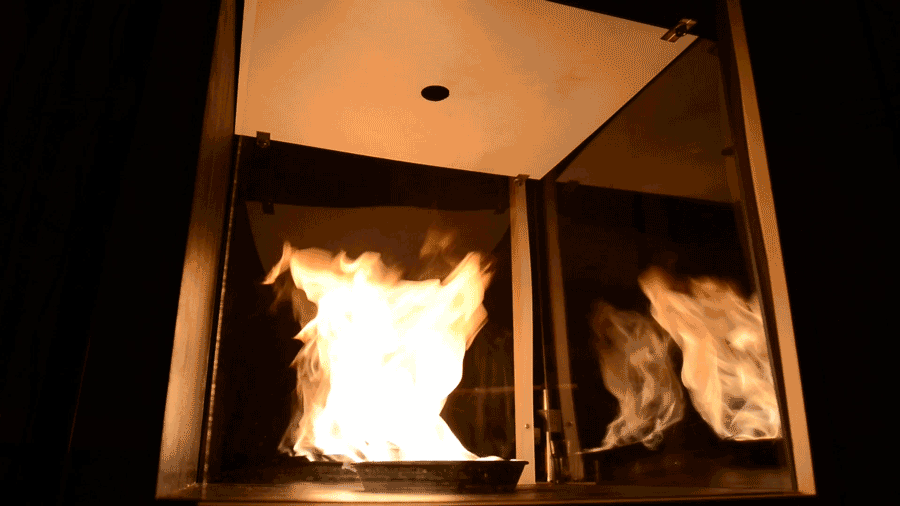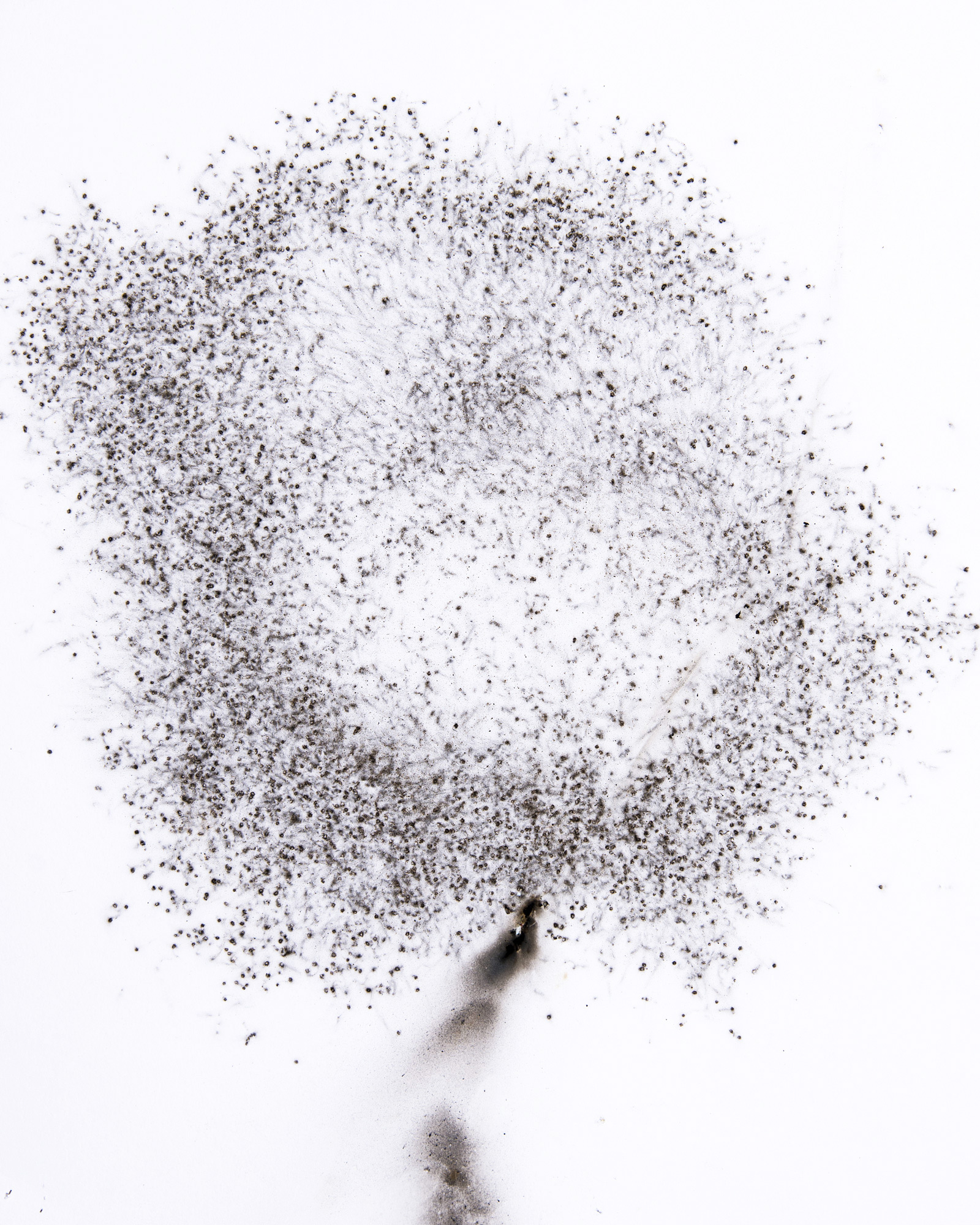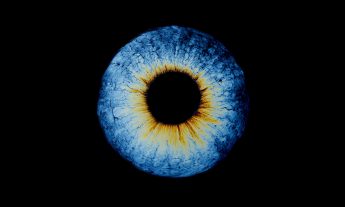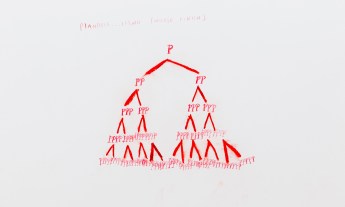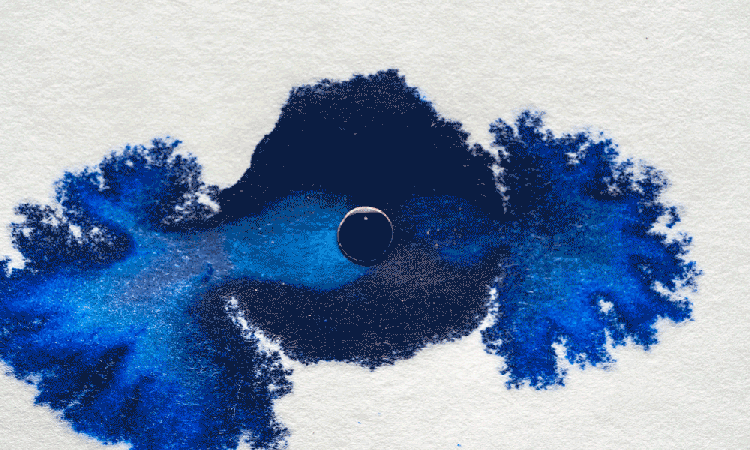
If Bill Nye, Jackson Pollock and Rube Goldberg ever had a hack week, the end project might resemble “Nature’s Drawings,” a project from scientist/artist Fabian Oefner.
Whether he’s capturing the rainbow colors of a film of oil in spectacular detail or catching oddly shaped iridescent soap bubbles just as they’re about to pop, Fabian Oefner has a passion for combining art and science (TED Talk: Psychedelic science). With “Nature’s Drawings,” he is transforming the act of creating his art into something as important as — or even more important than — the final works themselves. “One could say the drawings that are being made during the process are … byproducts,” he says. “The installation itself is actually the art.”
For the installation, Oefner built eight devices that together form what he calls “a drawing apparatus.” Each device harnesses a natural or chemical force, such as fire, water or electricity, to create its own abstract image on paper. “I build a framework for art to happen, and then I step back and observe how magic unfolds in front of my eyes,” he says. Here, he explains how his enchanting apparatus works.
An orchestra of 8 experiments
The eight stations of “Nature’s Drawings” work in a carefully choreographed sequence. Each station is a mini-science experiment — some occur in seconds, while others take up to 20 minutes — and, à la Rube Goldberg, each one trips off the next one. From start to finish, the entire process takes about one hour.
The branching beauty of electricity
The first drawing is a Lichtenberg figure, a common sight for anyone who’s seen a big lightning storm. To create it, Oefner mixes ordinary table salt with water and spreads this solution across a sheet of paper diagonally from top left to bottom right. Then he puts a copper nail at each of these two corners and attaches an electrical wire to each, creating a negative and positive pole. Once he connects the circuit, the electrical current flows through the paper, conducted by the ions in the salt solution, and branches as it searches for a path between the nails, burning a dark path in the paper as it goes. The resulting image looks like a frozen lightning strike, and like a lightning strike, it is different every time the device is run. “You can’t really define what the Lichtenberg figure is going to look like in the end,” he says. “You just create all the ingredients, and the forces define the look of it. I think that’s very poetic, very beautiful.”
Playful dance of devices
Here’s an example of the Rube Goldberg effect: At the Lichtenberg station, Oefner places a tiny thread in the middle of the paper, and as the electrical current burns through the paper, it also tears through the thread, which, when severed, releases a hammer at the second station. That hammer falls onto a valve, releasing pressurized air. The burst of the air over a circle of black ink forms the ink splotch seen in the above drawing; the phenomenon highlighted is pneumatic force. Next, the release of the valve causes a small pipe to fall onto the ground. The pipe is connected to a wire, which unplugs the cork on a water bottle at the third station. The water begins to flow, creating the next image. “It’s always a bit different how each one is triggered,” Oefner says.
Pattern provoked by windshields
Once uncorked, the water spills from the bottle into a bucket held by a wooden hand. Once this bucket is full, it spills into another, and another, until eventually, it flows over a piece of paper covered with a mix of charcoal and graphite. The rushing water produces the patterns seen above. “I don’t really know what that force is called; it’s just something I observed in nature,” Oefner says, “When you look at windscreens on cars, sometimes you see those patterns. I draw my inspiration from all these different kinds of things in everyday life.”
The poetry of melting ice
To demonstrate the movement of melting ice, Oefner stirs ink, charcoal powder and other ingredients into water and freezes the mixture into a piece of ice. He then lets the ice melt on the paper, and the resulting black powder residue shows how the ice flowed as it melted. “I think the ice is also very poetic. Being from Switzerland and growing up going to the Alps and seeing the glaciers, I’ve always wanted to work with it,” he says. “Here I have, on a very small scale.”
Merging ink and water
Here, Oefner harnesses capillary force — the same force that causes mercury to rise in a thermometer — to spread ink across a piece of paper, which is laid on top of a wooden box. Paper strips are connected to that sheet and lead from the box into a tray filled with water on the floor. Water moves up the strips until it meets the sheet of paper, on which there are small drops of ink. As the water begins to move across its surface, it spreads the ink into small circles. At the same time, water begins to leak from a small hole in the tray and into a cup. Once the cup is heavy enough, it tips a small scale upwards and trips the next station.
The magic of magnets
In the sixth device, iron dust interacts with a magnet. Oefner puts a large round magnet about the size of a person’s palm in a tray filled with water and then places a piece of paper on top of it. Above the tray, a perforated tube filled with powdered iron is poised on a small incline ramp. When the station is triggered, the tube rolls along the incline, sprinkling iron powder into the water, where it’s drawn to the magnet and comes to rest on top of the paper. After about two hours, the powder begins to rust — a process that Oefner speeds up by adding vinegar to the water — and the rust is imprinted into the paper. “When you take the paper out of the water, you can see how the magnet was placed underneath,” he says.
A fiery vortex in a box
Perhaps the most dramatic drawing station begins with a battery and a small piece of steel wool, sitting at the bottom of a tall box. Current from the battery ignites the steel wool, which in turn ignites a tray filled with gasoline. Whooomp! At the very top of the box is a powerful fan that sucks air upwards. “On that box, there are little slits on the side which have been placed in a circular motion,” he says. “When air is sucked out of the box through the fan, more air flows into the box from the slits, which creates a circular motion of air currents. The fire is basically there to visualize that process.” The fire shoots up through a hole in the center of the box and burns an image into a piece of paper. “You can really see the motion of the tornado in the paper,” he says.
Unsurprisingly, working with natural forces comes with risks. Once, Oefner accidentally poured too much gasoline into the fire tornado; the entire box went up in flames. And while the Lichtenberg figure in the first drawing is beautiful, it’s “drawn” by a 10,000-volt current. “You have to make sure you’re standing far away when you start it,” he says. Oefner accepts these challenges as the side effects of letting natural and chemical phenomena play out. Besides, he says, “it would be quite boring if everything worked all the time.”
Ending with a bang
The eighth — and final — station uses music, something that Oefner has worked with in the past. He places a piece of paper on top of a speaker and scatters gunpowder on top of the paper. When the speaker is turned on and music plays, the gunpowder bounces up and down in time to the beat until a fuse reaches it and it ignites. “The music is imprinted with the black powder into the paper,” he says.
Oefner worked with Nikon to film the apparatus in his studio using a 360-degree camera (see video below). He “hopes to install the apparatus soon as part of an exhibit where viewers can see it in action, so they too can marvel at these common, natural, knowable forces. “We see those things every day, and yet we don’t get to see them up close or have more time to look at them,” he says. “What I would like to get across with my art is to take a look at very basic, simple things a bit more closely and start to see the beauty in them.”
All images courtesy of Fabian Oefner.

